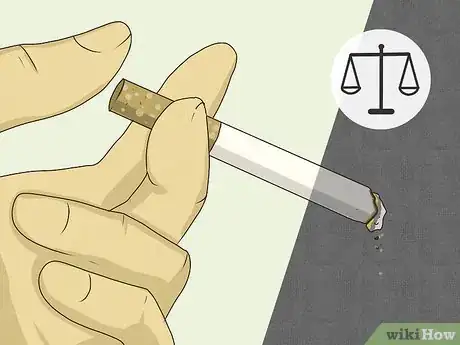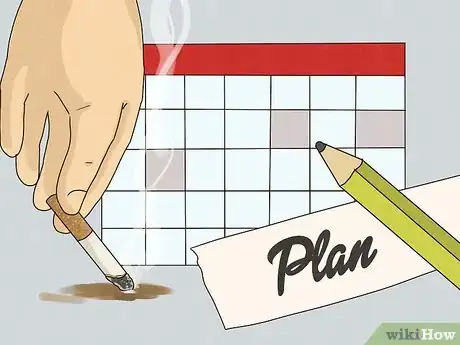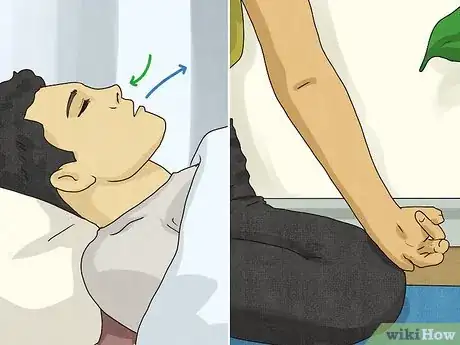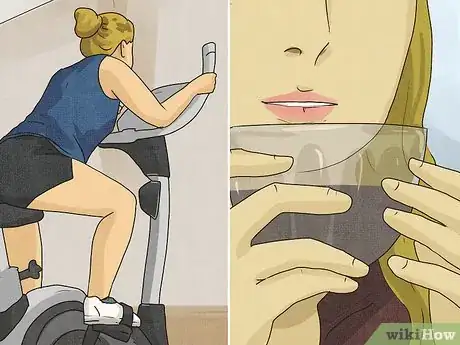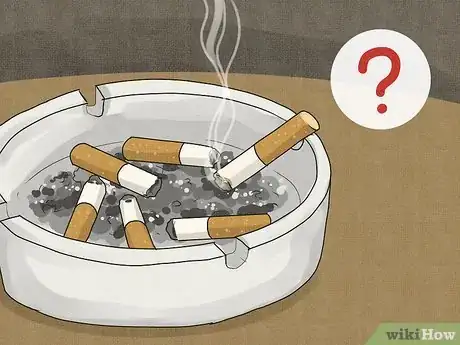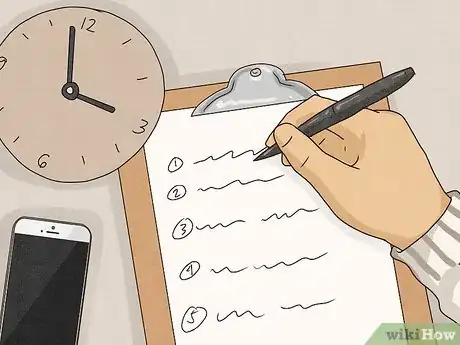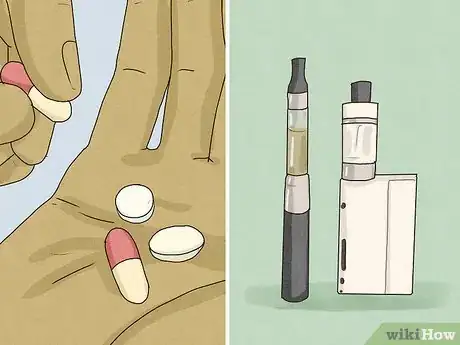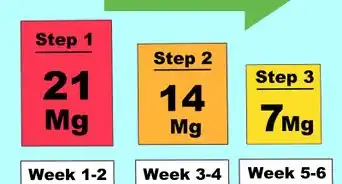This article was co-authored by Natalie Feinblatt, PsyD. Dr. Natalie Feinblatt is a Clinical Psychologist with a private practice based in Los Angeles, California. With over 15 years of experience, Dr. Feinblatt specializes in helping people with addiction, trauma, and other mental health struggles. She holds a BA in Psychology from The University of California, San Diego, and a Master’s degree and Doctor of Psychology (PsyD) from Pepperdine University. Dr. Feinblatt is licensed in the state of California.
There are 13 references cited in this article, which can be found at the bottom of the page.
wikiHow marks an article as reader-approved once it receives enough positive feedback. In this case, several readers have written to tell us that this article was helpful to them, earning it our reader-approved status.
This article has been viewed 542,604 times.
Quitting smoking cold turkey is a challenge that requires significant commitment and perseverance. If you want to quit smoking on your own, then you have to stay mentally strong, keep busy and active, and react appropriately to any relapses. If you want to know how to quit smoking cold turkey, just follow these steps.
Steps
Staying Mentally Tough
-
1Understand the pros and cons of quitting cold turkey. Quitting cold turkey means deciding to quit smoking completely without the help of nicotine replacement therapy or drugs. This requires perseverance and independence. Only 3-10% of people have been able to successfully quit smoking cold turkey because of the drastic change this makes in their lives. Before you try quitting cold turkey, you should understand the advantages and disadvantages of the process.[1]
-
Advantages:
- If you have to quit because you have a serious health problem as a result of your smoking, quitting cold turkey will be the quickest way to improve your health or to keep it from further deteriorating. You will also be more motivated to do it on your own if you have a serious health risk.
- You may feel more pain, but you'll feel it for a shorter amount of time. Instead of spending months or even a year dealing with medication and nicotine therapy and slowly weaning your body off nicotine, you will be able to conquer your addiction more quickly if you do succeed.
-
Disadvantages:
- You may experience intense and unpleasant withdrawal symptoms, such as depression, insomnia, irritability, and anxiety.
- You have less of a chance of success if you quit cold turkey than if you try to use a combination of other methods.
-
Advantages:
-
2Make a game plan. Making a game plan will help you be more firm about your decision to quit and will make you more committed to the process. You should pick a day on your calendar for starting to quit and mark off every day that you have successfully gone without smoking. Pick a time of your week or month that will be the most stress-free, where you'll be less likely to break down and want a cigarette.
- Know your triggers. Write down the triggers that lead you to smoking, whether it's drinking whisky, going to parties, or even listening to jazz. Decide how you can avoid them.[2]
- Keep reminding yourself why you want to quit. Once you start your plan, keep telling yourself that you want to quit for health reasons, for your family, and for your friends.[3] You can even write a motivational note to yourself and keep it in your wallet.[4]
- Remember that the first few days are the hardest. Factor this into your game plan. Reward yourself for getting through your first few days, or first few weeks, of quitting cold turkey.
- Keep a journal where you record your thoughts and feelings throughout the process. Make a plan to write in the journal at least once a day, so you feel more in touch with how your mind and body are feeling.
Advertisement -
3Manage your stress. If you manage your stress, you will be much less likely to keep smoking. You may even be using smoking as a coping mechanism to deal with stress, so it's important to find other ways of dealing with your stress, so you're not tempted to relapse. Here are some great ways to manage your stress, so your mind feels sound while you're trying to quit:[5]
- Reflect. Write down all of the factors in your life that are leading to stress and figure out how you can minimize them. If you can eliminate or reduce any sources of stress before you start trying to quit, the process will be much easier.
- Do activities that calm you down. Try meditation, yoga, taking long walks, or listening to soothing music before bed.
- Get lots of rest. You will feel much more capable of dealing with stressful situations if you go to bed and wake up around the same time every day, and give your body enough time to sleep.
- Open up to a friend about your feelings. You will feel much more at ease if you don't feel so alone in your decision to quit smoking.
Leading a Busy and Active Life
-
1Keep your body active. If you want to quit smoking, you have to keep your body active so that you have less time to think about indulging in a craving. Keeping your body active can not only keep you feel healthier but will help you replace your smoking routine with other routines. Here's what to do:[6]
- Keep your mouth active. Drink lots of water, tea, juice, or anything to keep your mind occupied. Chew gum or suck on mints when you need to.
- Keep your hands busy. Squeeze a stress-relieving ball, doodle, play with your phone, or find another way to keep your hands busy so you don't end up reaching for a cigarette.
- Get some exercise. If you don't have an exercise routine, pick one up. Working out for just 30 minutes a day can make your body and mind feel more fit and relaxed.
- Go for walks. This is a great thing to do, especially when you have a craving.
-
2Be socially active. If you're trying to quit smoking, it's not the time to hole up alone in your room, or you'll find it much harder to keep your mind off of having another cigarette. Take this as the opportunity to spend more time with your friends and family, and you'll not only be distracted from smoking, but you'll be happier.[7]
- Accept more invitations. Take this as an opportunity to go to more events, even if you've avoided them in the past.
- Invite a friend out for coffee, a walk, or a drink. Turn an acquaintance or a casual friend into a closer friend by taking the time to chat. Try to invite them to an activity that won't lead to one of your triggers.
- When you hang out with friends and family, open up about how you're trying to quit. This will make you feel less alone and more supported.
- Do something fun that involves activity. Go to a yoga class with a friend, go out dancing, or invite a friend for a hike or a trip to the beach to go swimming.
- Find new ways to be socially active that don't revolve around smoking. For instance, join a photography or hiking club.[8]
-
3Avoid temptation. This is a must. Once you know your trigger points, it's important to avoid any situations that will lead you to relapse, or which will make it almost impossible for you to do anything but think about smoking. Here's how to do it:[9]
- Try to avoid hanging out with other smokers as much as you can. Of course, if one of your best friends is a smoker, just have a serious conversation about it, and try to minimize your time around the friend when s/he is smoking.[10]
- Avoid the places where you used to buy cigarettes. If you can't go to your usual grocery store or drive by the convenience store where you buy your cigarettes without wanting to buy a pack, avoid your usual route and find new stores.
- Avoid situations where you tend to smoke. If you always smoke when you hang outside the mall, go to a particular restaurant, or go out to clubs, try to cut those situations out of your routine.
-
4Find a new hobby or interest. Finding a new healthy "addiction" to replace your smoking habit can help you refocus your energies and be more excited about your new routine instead of feeling like you're just slogging through your days without smoking. Here are some great hobbies or interests to pursue:[11]
- Do something with your hands.[12] Try writing a short story or a poem, or take a pottery or art class.
- Try running. If you set a goal to run a 5K or even a 10K, you'll be so focused on your new training plan that you won't have time to think about smoking all the time.
- Be adventurous. Try hiking or mountain biking. Do something completely out of your comfort zone that will take your mind off cigarettes.
- Find a new love for food. Though you shouldn't replace your cigarette cravings with food cravings, you should take the time to appreciate food and maybe even learn how to cook. Notice how much better everything tastes now that you're not smoking.
Reacting Appropriately to a Relapse
-
1Reflect after the relapse. After you've had a relapse, whether it was just bumming one cigarette at a party or smoking an entire pack during a rough day, it's time to sit back and ask yourself why it happened. Understanding why you had a relapse is the key to preventing future relapses. Here are some questions you should ask yourself:[13]
- Did you have a relapse because you were feeling stressed? If so, you should think more about how you can minimize your stress, or avoid particularly stressful situations. For example, if you had a cigarette because of a stressful day at work, find a way to deal with another stressful day at work, such as having ice cream or watching your favorite movie after work instead.
- Did you have a relapse because you were in a situation that made you want to smoke? If you had a cigarette at your friend Beth's party because you associate her parties with having a nice cool smoke on the back porch, then you should either avoid her parties for a while or come equipped with gum, a dessert, or a game plan for beating the craving.
- What were you feeling right before you relapsed? Recognizing those feelings can help you fight them in the future.
-
2Resume your routine. This is an important point. Just because you had one cigarette or relapsed for a day doesn't mean you should think you're a failure and give up entirely. Don't use the relapse as an excuse to go back to smoking. Just because you had a moment of weakness doesn't mean that you're a weak person and that you don't have the skills to quit.[14]
- Just do what you've been doing. If you've been trying to quit for a while, then your body will be craving cigarettes less than it normally would, even if you've had a relapse.
- Be extra vigilant after the relapse. For the week after the relapse, try harder than ever to stay busy and active, to avoid temptation, and to manage your stress.
-
3Know when to try other methods for quitting. There's a reason only 3 -10% of people can successfully quit smoking cold turkey. It's tough. If you've been trying to quit cold turkey for months or even years but always relapse or even fall into long periods when you resume your regular smoking routine, then cold turkey may not be the best method for you. Here are some other great methods to try:[15]
- Behavioral therapy. A behavioral therapist will help you find your triggers, provide support, and can help you decide the best way to quit.
- Nicotine replacement therapy. Nicotine patches, gum, lozenges, and sprays are ways of giving your body nicotine without the tobacco. This is a good way of weaning your body off off nicotine instead of quitting all at once.
- Medication. See your doctor about getting a prescription for a medicine that will help you quit smoking.
- Combination treatments. Behavioral therapy, replacement therapy or medication, and ample support from friends and family can be the best way to ensure that you will truly quit smoking for good.
References
- ↑ http://www.health.com/health/condition-article/0,,20213802,00.html
- ↑ https://smokefree.gov/challenges-when-quitting/cravings-triggers/know-your-triggers
- ↑ https://smokefree.gov/quit-smoking/why-you-should-quit/reasons-to-quit
- ↑ https://www.lung.org/stop-smoking/i-want-to-quit/reasons-to-quit-smoking.html
- ↑ https://www.webmd.com/balance/guide/tips-to-control-stress#1
- ↑ https://www.cancer.org/healthy/stay-away-from-tobacco/guide-quitting-smoking/quitting-smoking-help-for-cravings-and-tough-situations.html
- ↑ http://www.everydayhealth.com/stop-smoking/10-ways-to-outsmart-cigarette-cravings.aspx
- ↑ Natalie Feinblatt, PsyD. Clinical Psychologist. Expert Interview. 30 July 2021.
- ↑ http://www.quitsmokingsupport.com/coldturkey.htm
- ↑ Natalie Feinblatt, PsyD. Clinical Psychologist. Expert Interview. 30 July 2021.
- ↑ Natalie Feinblatt, PsyD. Clinical Psychologist. Expert Interview. 30 July 2021.
- ↑ https://www.heart.org/en/healthy-living/healthy-lifestyle/quit-smoking-tobacco/5-steps-to-quit-smoking
- ↑ https://www.nhs.uk/live-well/quit-smoking/what-to-do-if-you-start-smoking-again/
- ↑ https://www.webmd.com/smoking-cessation/features/smoking-relapse#1
- ↑ http://www.webmd.com/smoking-cessation/quit-smoking?page=2
About This Article
Quitting smoking cold turkey can be a challenging process, but it can help to have coping mechanisms, like mints and chewing gum, to keep your mouth busy when you’re craving a cigarette. If you smoke as a way to deal with stress, try activities such as meditation or going to the gym in order to manage your stress levels. Additionally, try to spend more time with family and friends, who can help you keep your mind off cigarettes. However, make sure to avoid triggers that can cause you to relapse, like parties where everyone is smoking. For more advice, including how to quit smoking through methods like behavioral therapy, keep reading.
